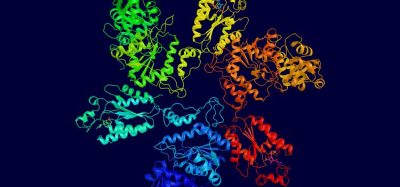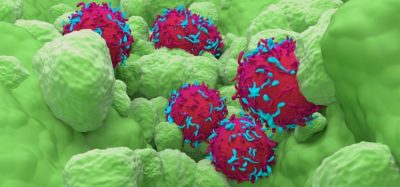Beyond nutrition: vitamins and n-3 polyunsaturated fatty acids as APIs
Posted: 18 November 2019 | Eric Ciappio (DSM) | No comments yet
Active pharmaceutical ingredients (APIs) are important compounds used in the manufacture of pharmaceutical drug products. Eric Ciappio discusses the potential of vitamins and n-3 polyunsaturated fatty acids (PUFAs) as APIs, with a focus on their clinical relevance.


VITAMINS AND n-3 PUFAs are nutrients that play an essential role in human health, serving as critical components of the patient care continuum. A significant proportion of the general population are at high risk for suboptimal or inadequate vitamin and n-3 PUFA status, which may emerge as a consequence of – or be exacerbated by – specific disease states, pharmacologic interventions and even hospitalisation. The therapeutic use of vitamins and n-3 PUFAs in clinical practice has moved beyond the scope of deficiencies, which has validated the notion of broader utilisation of these active pharmaceutical ingredients (APIs) in clinical practice. To date, several vitamins and n-3 PUFAs (eg, eicosapentaenoic acid [EPA] and docosahexaenoic acid [DHA]) have been approved – alone or in combination – as APIs for clinically‑relevant indications. Emerging research suggests promising applications for the development of new indications and a myriad of opportunities exist for pharmaceutical manufacturers to develop innovative, vitamin and PUFA-based treatments to address unmet needs, improve quality of life (QoL) and contribute to beneficial patient outcomes.
Clinical relevance – an argument for vitamins and PUFAs as APIs
Emerging scientific evidence highlights the beneficial impact of therapeutic, vitamin and PUFA intake on a variety of chronic illnesses such as type 2 diabetes mellitus (T2DM), cancer and cardiovascular disease (CVD).
Cardiovascular disease
Over 17 million patients die annually of CVD, representing 31 percent of all deaths globally and making CVD the leading cause of global morbidity and mortality by a significant margin.1 Recent meta-analyses have demonstrated that oral or intravenous (IV) administration of vitamin C prior to and for several days following cardiac surgery can be effective in reducing the incidence of atrial fibrillation and shortening length of stay.2 Genotype may play a role in determining response to vitamin treatment. For example, the haptoglobin 2-2 (Hp2-2) genotype is a significant predictor of coronary heart disease (CHD) risk in individuals with elevated haemoglobin A1C.3-5 In these patients, vitamin E supplementation is linked to a decrease in cardiovascular events.6 Therapy with vitamin E in individuals with the Hp2-2 genotype already taking statins was shown to significantly prolong event-free survival compared to statin treatment alone.7
Vitamins are also being used in the development of functionalised polycarbonate hydrogels for the targeted delivery of antibody drugs”
A recent meta-analysis – which aimed to determine the effect of EPA and DHA on CHD and the association between intake and risk – demonstrated that intake of EPA and DHA may reduce the risk of CHD in people with elevated blood triglyceride levels or LDL cholesterol. Results showed a statistically significant 18 percent reduced risk of CHD in the prospective cohort studies, as well as in subgroup analysis of randomised controlled trials in higher risk populations.27 Importantly, the use of n-3 PUFAs for CVD risk management has recently been endorsed by the European Society of Cardiology (ESC) and European Association for the Study of Diabetes (EASD). As noted in the 2019 guidelines on diabetes, pre-diabetes and cardiovascular diseases, high-dose n-3 PUFAs (4g/day of icosapent ethyl, a purified ethyl esther of EPA) may be used. As referenced in the guidelines, the landmark REDUCE-IT trial reinforced the beneficial effects of intensive triglyceride reductions using n-3 PUFAs in individuals at increased risk for ischemic events. In the trial, the risk of the primary composite end point of cardiovascular death, nonfatal myocardial infarction, nonfatal stroke, coronary revascularisation or unstable angina was significantly lower, by 25 percent, among patients who received 4g of icosapent ethyl daily.17
Oncology
Europe contains nine percent of the world’s population yet has a 25 percent share of the global cancer burden. With more than 3.7 million new cases and 1.9 million deaths each year, cancer represents the second highest cause of death and morbidity in Europe.8-9 Aggressive courses of chemotherapy and radiation treatment remain clinically advantageous in many cases; as such, serious and often debilitating side effects can be difficult for patients and healthcare professionals. Emerging research suggests that vitamin C can mitigate chemotherapy‑related fatigue and improve QoL. It may also improve the efficacy of chemotherapy and radiotherapy in certain malignancies. Because of their known safety profile and biocompatibility, vitamins are also being used in the development of functionalised polycarbonate hydrogels for the targeted delivery of antibody drugs.10-15


Type 2 Diabetes Mellitus
The global incidence of T2DM continues to increase at an alarming rate. It is estimated that approximately 10 percent of the European population has been diagnosed with diabetes, with prevalence continuing to increase among all ages in the European Region; the World Health Organization (WHO) projects that diabetes deaths will double between 2005 and 2030.16 Vitamin D may have favourable effects on glycaemic control in patients with T2DM. A recent meta‑analysis demonstrated the efficacy of vitamin D supplementation in improving glucose management; in individuals with vitamin D deficiency at baseline, fasting blood sugar levels also decreased through supplementation.18 Metformin is a first-line agent for treatment of T2DM. However, metformin is known to deplete vitamin B12, resulting in vitamin B12-deficiency, cognitive impairment and neurologic dysfunction. Combination therapy, including metformin and vitamin B12 (sublingual or injection) was demonstrated to normalise vitamin B12 levels in metformin users.19-21 High‑dose thiamine (vitamin B1) supplementation has been found to help preserve kidney function in T2DM patients, an effect that may be linked to improved glycaemic control or mitigation of advanced glycation end products.22-25 Finally, combination therapy consisting of gabapentin with thiamine and vitamin B12 has potential for the treatment of diabetic neuropathy.26
Future opportunities
Vitamin and n3-PUFA APIs are a critical component of future treatment modalities aimed at improving health outcomes and overall patient QoL. These improvements are especially important in the context of current epidemiologic trends; high-risk patient subgroups (ie, patients over the age of 65 with multiple comorbidities, malnourished individuals, pregnant women and/or children) represent a disproportionate share of overall drug and nutrient users and are critical stakeholders for future investments in chronic disease treatment and management.29
Vitamin and n3-PUFA APIs are a critical component of future treatment modalities aimed at improving health outcomes and overall patient QoL”
There remains significant untapped potential to optimise existing therapies to best meet the needs of patients, healthcare professionals and payers. Enhanced customisation of existing therapies to address patient or healthcare needs could lead to better outcomes for the healthcare community. A better understanding of vitamin and n-3 PUFA biochemical properties, mechanisms of action and additive effects may result in biopharmaceutical manufacturers choosing to leverage these compounds to quickly and cost-effectively develop novel combination products. This will ultimately lead to novel therapeutic applications in the form of innovative dosage forms/delivery systems, new indications, optimised adverse event profiles and improved adherence/persistence.
About the author
Eric Ciappio gained a PhD in Biochemical and Molecular Nutrition from Tufts University and completed his postdoctoral training at the National Cancer Institute in Bethesda, MD. He is also a registered dietitian. He currently works at DSM Nutritional Products where his primary responsibility is helping pharmaceutical companies develop products utilising lipid APIs and API intermediates.
References
- World Health Organization: Cardiovascular Diseases, October 2019 (http://www.who.int/mediacentre/factsheets/fs317/en/).
- Baker W, et al. Meta-analysis of ascorbic acid for prevention of postoperative atrial fibrillation after cardiac surgery. Am J Health Syst Pharm. 2016;73: 2056–2066.
- Cahill L, et al. Haptoglobin genotype is a consistent marker of coronary heart disease risk among individuals with elevated glycosylated hemoglobin. J Am Coll Cardiol. 2013;61: 728-737.
- Cahill L, et al. The risk of coronary heart disease associated with glycosylated hemoglobin of 6.5% or greater is pronounced in the haptoglobin 2-2 genotype. J Am Coll Cardiol. 2015;66: 1791–1799.
- Home B, et al. Haptoglobin 2-2 genotyping for refining standard cardiovascular risk assessment: A promising proposition in need of validation. J Am Coll Cardiol 2015;66: 1800–1802.
- Milman U, et al. Vitamin E supplementation reduces cardiovascular events in a subgroup of middle-aged individuals with both type 2 diabetes mellitus and the haptoglobin 2-2 genotype: A prospective double-blinded clinical trial. Arterioscler Thromb Vasc Biol 2008;28: 341–347.
- Blum S, et al. Dual therapy with statins and antioxidants is superior to statins alone in decreasing the risk of cardiovascular disease in a subgroup of middle-aged individuals with both diabetes mellitus and the haptoglobin 2-2 genotype. Arterioscler Thromb Vasc Biol. 2008;28: 18–20.
- Ferlay J, et al. Cancer incidence and mortality patterns in Europe : Estimates for 40 countries and 25 major cancers in 2018. Eur J Cancer. 2018;103: 356-387.
- World Health Organization: Cancer Data and Statistics, October 2019 (http://www.euro.who.int/en/health-topics/noncommunicable-diseases/cancer/data-and-statistics).
- Carr A, et al. The effect of intravenous vitamin C on cancer- and chemotherapy-related fatigue and quality of life. Front Oncol. 2014;4.
- Ma Y, et al. High-dose parenteral ascorbate enhanced chemosensitivity of ovarian cancer and reduced toxicity of chemotherapy. Sci Transl Med. 2014;6: 222.
- Cieslak J, et al. Treatment of pancreatic cancer with pharmacological ascorbate. Curr Pharm Biotechnol. 2015;16: 759– 770.
- J Du, et al. Pharmacological ascorbate radio sensitizes pancreatic cancer. Cancer Res. 2015;75: 3314–3326.
- Lee A, et al. Injectable hydrogels from triblock copolymers of vitamin E-functionalized polycarbonate and poly(ethylene glycol) for subcutaneous delivery of antibodies for cancer therapy. Adv Funct Mater. 2014;24: 1538–1550.
- Lee A, et al. Injectable biodegradable hydrogels from vitamin D-functionalized polycarbonates for the delivery of Avastin with enhanced therapeutic efficiency against metastatic colorectal cancer. Biomacromolecules. 2015;16: 465–475.
- World Health Organization: Diabetes Data and Statistics, October 2019 (http://www.euro.who.int/en/health-topics/noncommunicable-diseases/diabetes/data-and-statistics).
- Bhatt D, et al. Cardiovascular Risk Reduction with Icosapent Ethyl for Hypertriglyceridemia. N Engl J Med. 2019;380: 11-22.
- Wu C, et al. Vitamin D supplementation and glycemic control in type 2 diabetes patients: A systematic review and meta-analysis. Metab Clin Exp. 2017;73: 67–76.
- Upadhyay J, et al. Pharmacotherapy of type 2 diabetes: An update. Metab Clin Exp. 2018;78: 13–42.
- Carmel R, et al. How I treat cobalamin (vitamin B12) deficiency. 2008;112: 2214–2221.
- Strong A, et al. Sublingual vitamin B12 compared to intramuscular injection in patients with type 2 diabetes treated with metformin: a randomised trial. N Z Med J. 2016; 129:67–75.
- Rabbani N, et al. High-dose thiamine therapy for patients with type 2 diabetes and microalbuminuria: a randomised, double blind placebo-controlled pilot study. 2009;52: 208–212.
- Polizzi F, et al. Increased DNA-glycation in type 2 diabetic patients: The effect of thiamine and pyridoxine therapy. Exp Clin Endocrinol 2012;120: 329–334.
- Shahmiri F, et al. High-dose thiamine supplementation improves glucose tolerance in hyperglycemic individuals: a randomized, double-blind crossover trial. Eur J Nutr. 2013;52: 1821–1824.
- Alaei-Shahmiri F, et al. The impact of thiamine supplementation on blood pressure, serum lipids and C-reactive protein in individuals with hyperglycemia: a randomised, double-blind cross-over trial. Diabetes Metab Syndr Clin Res Rev. 2015;9: 213–217.
- Mimenza Alvarado A. Clinical trial assessing the efficacy of gabapentin plus B complex (B1/B12) versus pregabalin for treating painful diabetic neuropathy. J Diabetes Res. 2016:4078695.
- Alexander D, et al. A meta-analysis of randomized controlled trials and prospective cohort studies of eicosapentaenoic and docosahexaenoic long-chain omega-3 fatty acids and coronary heart disease risk. Mayo Clinic Proceedings. 2017;92(1):15-29.
- Colomer R, et al. N-3 fatty acids, cancer and cachexia: a systematic review of the literature. Br J Nutr. 2007;97(5): 823-31.
- Raats M, et al. Food for the ageing population. Woodhead Publishing Limited 2009.
- Nabavi S, et al. Omega-3 polyunsaturated fatty acids and cancer: lessons learned from clinical trials. Cancer Metastasis Rev 2015;34(3): 359-80.
Issue
Related topics
Active Pharmaceutical Ingredient (API), Drug Development, Formulation, Ingredients, Research & Development (R&D), Therapeutics
Related organisations
Dr. Paul Lohmann, European Association for the Study of Diabetes (EASD), European Society of Cardiology (ESC), Lonza, World Health Organization (WHO)









